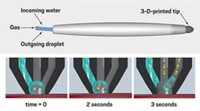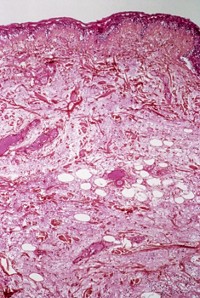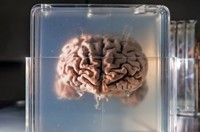Advertisement
Grab your lab coat. Let's get started
Welcome!
Welcome!
Create an account below to get 6 C&EN articles per month, receive newsletters and more - all free.
It seems this is your first time logging in online. Please enter the following information to continue.
As an ACS member you automatically get access to this site. All we need is few more details to create your reading experience.
Not you? Sign in with a different account.
Not you? Sign in with a different account.
ERROR 1
ERROR 1
ERROR 2
ERROR 2
ERROR 2
ERROR 2
ERROR 2
Password and Confirm password must match.
If you have an ACS member number, please enter it here so we can link this account to your membership. (optional)
ERROR 2
ACS values your privacy. By submitting your information, you are gaining access to C&EN and subscribing to our weekly newsletter. We use the information you provide to make your reading experience better, and we will never sell your data to third party members.
Analytical Chemistry
Seeking Carcinogen-Linked DNA In Tissue Samples
Toxicology: For the first time, researchers unambiguously identify DNA damaged by an environmental chemical in preserved tissues
by Erika Gebel
April 19, 2013
CORRECTION: This story was updated on May 1, 2013, to correct the legal status of importing herbs containing aristolochic acid into the U.S.
Toxicologists would like to scan through preserved tissue samples collected from cancer patients over the past decades to determine if exposure to certain toxic chemicals can be linked to specific diseases. But the way doctors and researchers preserve tissue thwarts such molecular investigations. Now, researchers have developed a mass spectrometry technique that identifies and quantifies chemical signatures of carcinogen exposure in these preserved tissue samples (Anal. Chem., DOI: 10.1021/ac400612x).


For a century, medical researchers have preserved snippets of biological tissue with formaldehyde and paraffin wax. This method holds the cells’ morphology intact, but traps the DNA in a web of chemical cross links, which frustrates scientists’ attempts to study changes in DNA caused by toxic chemicals.
One key DNA change researchers look for are DNA adducts, pieces of DNA bound to a cancer-causing agent from the environment. Current methods that detect DNA adducts embedded in tissue preserved in formaldehyde and wax have serious drawbacks, says Robert J. Turesky of the Wadsworth Center at the New York State Department of Public Health: They either can tell you the amount of DNA adducts in a sample or the identity of the adduct, but they struggle to provide information on both.
Turesky studies a carcinogen called aristolochic acid found in some traditional herbal medicines. Aristolochic acid reacts with adenosine nucleotides to form an adduct that damages the DNA strand and triggers the uncontrolled proliferation of kidney cells. The Food and Drug Administration blocks the importation of all herbs containing aristolochic acid. But the herbs may still be available in other countries or through the Internet, Turesky says.
In a recent study, Turesky used mass spectrometry to accurately measure and unambiguously identify aristolochic acid DNA adducts in fresh frozen tissues (Chem. Res. Toxicol., DOI: 10.1021/tx3000889). But “freshly frozen tissues are not typically available for large molecular epidemiological studies,” he says. To assess the scope of the aristolochic acid problem worldwide, Turesky needed a way to get DNA adducts out of the more abundant preserved tissue samples.
Turesky and his colleagues tried several methods to purify the DNA adducts from the tissue samples, but they got lucky when they ran DNA from preserved samples through a commercial DNA purification kit. “I still don’t know what the key ingredients are in these kits,” Turesky says. But after analyzing the purified DNA with high-pressure liquid chromatography, his team found that the kits had reversed the cross-links.
They tested the new technique on preserved tissue samples from five patients with kidney cancer linked to aristolochic acid exposure. After purifying the DNA adducts, the researchers identified them by mass spectrometry and compared the results to data collected on freshly frozen tissue samples from the same patients. They found similar amounts of the same adduct in the two sample types, suggesting that the preserved tissues contained as much information about toxic chemical exposure as the fresh frozen samples did. The method also was sensitive: It could detect as few as three adducts per one billion DNA bases.
“People have been trying to do this for years, and even decades,” says Stephen Hecht of the University of Minnesota, Twin Cities. This method is the first one based on mass spectrometry that can definitively identify adducts and quantify them. Hecht sees no reason why the approach couldn’t be applied to other DNA adducts.
Turesky next plans to look for DNA adducts associated with smoking, cooked meats, and air pollution.







Join the conversation
Contact the reporter
Submit a Letter to the Editor for publication
Engage with us on Twitter